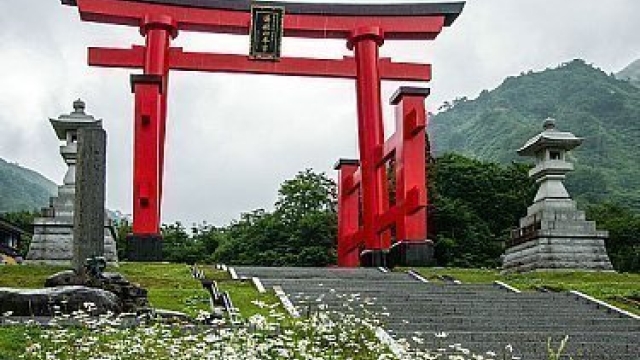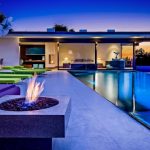
Japan is a land rich in culture and tradition, where every street corner and natural landmark tells a story. Among its most enchanting features are the Shinto shrines that dot the landscape, each a testament to the intricate beliefs and practices of a religion that predates modern society. These sacred spaces serve not only as places of worship but also as vibrant custodians of Japanese history, artistry, and nature.
The allure of Shinto shrines lies in their profound connection to the divine, nature, and community. Visitors are often drawn to their serene beauty, with torii gates marking the transition into sacred spaces and meticulously crafted structures that harmonize with their surroundings. Each shrine offers a unique glimpse into the spiritual life of Japan, inviting exploration of rituals, festivals, and the deep-rooted reverence for kami, the spirits that inhabit the world. As we embark on this journey through Japan’s sacred Shinto shrines, we will uncover the whispers of the divine that resonate within these venerable sites.
Historical Significance of Shinto Shrines
Shinto shrines in Japan hold a profound historical significance that dates back to ancient times. These sacred sites are deeply intertwined with the country’s cultural heritage, serving as places of worship and community gathering. The roots of Shinto can be traced to prehistoric animist traditions, where natural elements were venerated. Over centuries, Shinto shrines evolved, reflecting the spiritual relationship between the Japanese people and their environment, while symbolizing the continuity of tradition and identity.
The architectural styles of Shinto shrines showcase the evolution of Japanese construction and design, influenced by various historical periods. From the simplicity of early shrines to the intricacy of later designs, each shrine serves as a testament to the artisanal skills and aesthetic values of its time. Notable examples include the Ise Grand Shrine, which is rebuilt every twenty years in a ritual known as Shinto’s cycle of renewal, emphasizing both reverence and adaptation throughout history.
Furthermore, Shinto shrines have also played a significant role in Japan’s political landscape. Many shrines were historically associated with the imperial family and the state, reinforcing the notion of divine protection over the nation. The shrines not only served religious purposes but also acted as centers for governance, helping to unify local communities and bolster national identity during pivotal moments in Japanese history. This intricate relationship between Shinto shrines and the state reflects the enduring importance of these sacred places in shaping Japan’s past and present.
Architecture and Design Elements
The architecture of Shinto shrines in Japan is uniquely designed to harmonize with the natural surroundings, reflecting the deep respect for nature that is central to Shinto beliefs. Shrines typically feature wooden structures, often elevated above the ground, which allows them to blend seamlessly into the lush landscapes. Roofs are usually adorned with thatch or shingles, curved to create an elegant silhouette. The use of natural materials and traditional building techniques emphasizes sustainability and the beauty of impermanence, aligning with the Shinto concept of the sacredness of nature.
Each shrine possesses distinctive design elements that serve both aesthetic and spiritual purposes. The entrance, or torii gate, marks the transition from the mundane to the sacred, signaling that one is entering a holy space. The placement of the torii, along with the orientation of the shrine itself, is carefully considered, often facing specific celestial directions. Inside, the honden, or main hall, houses the kami, or spirit, and is architecturally simple to invite the divine presence without distraction. The overall layout promotes a sense of serenity and contemplation, inviting visitors to connect with the spiritual world.
In addition to their striking architectural features, Shinto shrines often incorporate symbolic elements that enhance their spiritual significance. For instance, the use of sacred stones, water basins, and lanterns is common, each holding specific meanings within the Shinto practice. Seasonal decorations and rituals may also reflect the passing of time and the cycle of life, reinforcing the connection between the physical and spiritual realms. These design elements not only create an aesthetic experience but also deepen the visitor’s spiritual journey through the shrine.
Rituals and Festivals at Shrines
Shinto shrines in Japan serve as vibrant centers for various rituals and festivals, reflecting the deep cultural and spiritual ties the Japanese people have with their faith. Many of these events are centered around the agricultural calendar, celebrating the changing seasons and expressing gratitude for bountiful harvests. Common rituals include purification practices, offerings of rice and sake to the kami, and traditional dances known as Kagura performed to please the deities.
One of the most famous festivals is the Gion Matsuri in Kyoto, held every July. This extravagant event features elaborate floats, traditional clothing, and processions through the city streets. Participants and visitors alike engage in communal activities that foster a sense of community and reverence for the kami. Such festivals not only strengthen local ties but also attract tourists from around the world who come to witness Japan’s unique cultural heritage.
Another important event is the New Year celebrations, known as Shogatsu, where people visit shrines to offer their first prayers of the year. The atmosphere is festive, with families gathering to partake in traditional activities such as drawing fortune slips, eating special rice cakes, and purchasing omamori, or protective charms. These rituals at Shinto shrines in Japan are more than mere traditions; they are vital expressions of faith, community, and the ongoing relationship between people and the divine.
神社 有名
The Role of Nature in Shinto Practices
Nature holds a central place in Shinto practices, reflecting the belief that divine spirits, known as kami, reside within various natural elements. This profound connection to the environment is evident in the architecture of Shinto shrines, which are often situated in serene natural settings, such as forests, mountains, and near water. The placement of these shrines emphasizes harmony with the surroundings, encouraging visitors to appreciate the beauty and spirituality of nature as a representation of the divine.
Rituals and ceremonies in Shinto frequently incorporate natural elements, embodying the significance of nature in worship. Offerings of rice, fruits, and flowers are common, symbolizing gratitude towards the kami and acknowledging their presence in the natural world. Additionally, sacred trees, rocks, and bodies of water are often venerated, as they are believed to house kami. This reverence for nature serves not only as a spiritual practice but also reinforces the responsibility to protect and honor the environment.
Moreover, seasonal changes play a vital role in Shinto, as festivals celebrate the cycles of nature and the agricultural year. These celebrations are marked by rituals that express thankfulness for bountiful harvests and invoke blessings for future prosperity. By integrating natural elements into both spiritual practice and community life, Shinto shrines in Japan foster a deep-seated respect for the environment and the divine forces believed to inhabit it.


